Books
Cold War Coloring Books
AboutComics.com recently released an expanded edition of Cold-War Coloring: Political Adult Coloring Books of the Kennedy Era, and WU played a small part in its creation.The book collects together politically-themed, satirical coloring books of the 1960s. Such as the JFK Coloring Book and Khrushchev’s Top Secret Coloring Book.
For the expanded edition the editor, Nat Gertler, wanted to include the Sing along with Khrushchov coloring book, published in 1962. However, he couldn't find a copy of it. There were no copies in libraries and none for sale.
Then he discovered that we here at WU happened to have posted a scanned copy of it online back in 2020. I tried to connect him with the reader who had sent us the scanned copy, so that he could get a higher-quality version of the pdf, but no luck there. But thankfully Nat was able to make do with the copy we had. So now this obscure title is once again in print.
Glad we were able to help prevent it from being lost forever.

Posted By: Alex - Thu Oct 19, 2023 -
Comments (1)
Category: Politics, Books, 1960s, Satire
1999: Our Hopeful Future
Like most predictive non-fiction, this 1956 volume has both hits and misses throughout. But I was amazed by one page, which predicts flatscreen TVs, a Roomba, and household surveillance cameras, bing-bang-boom!Read the whole thing here.
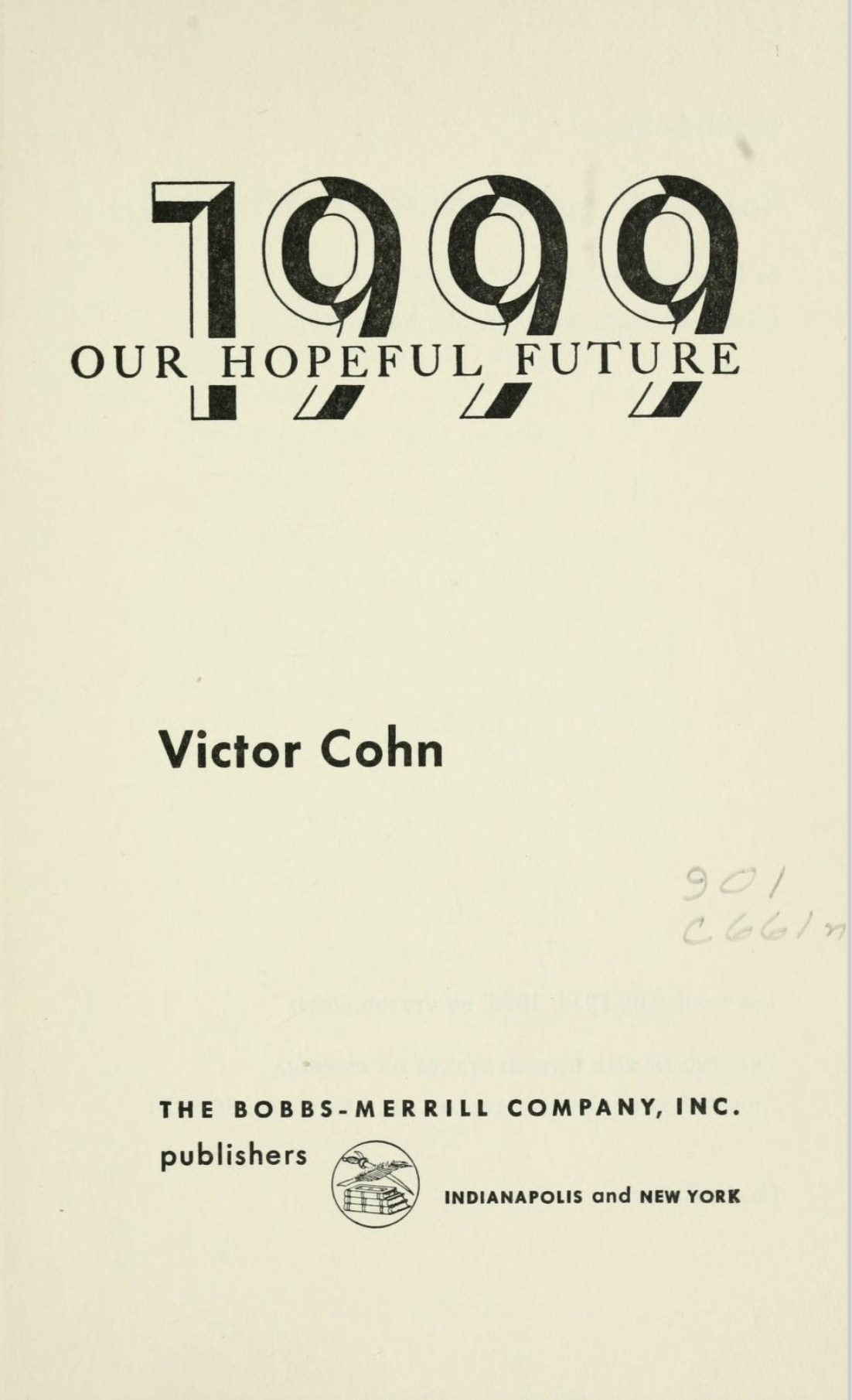
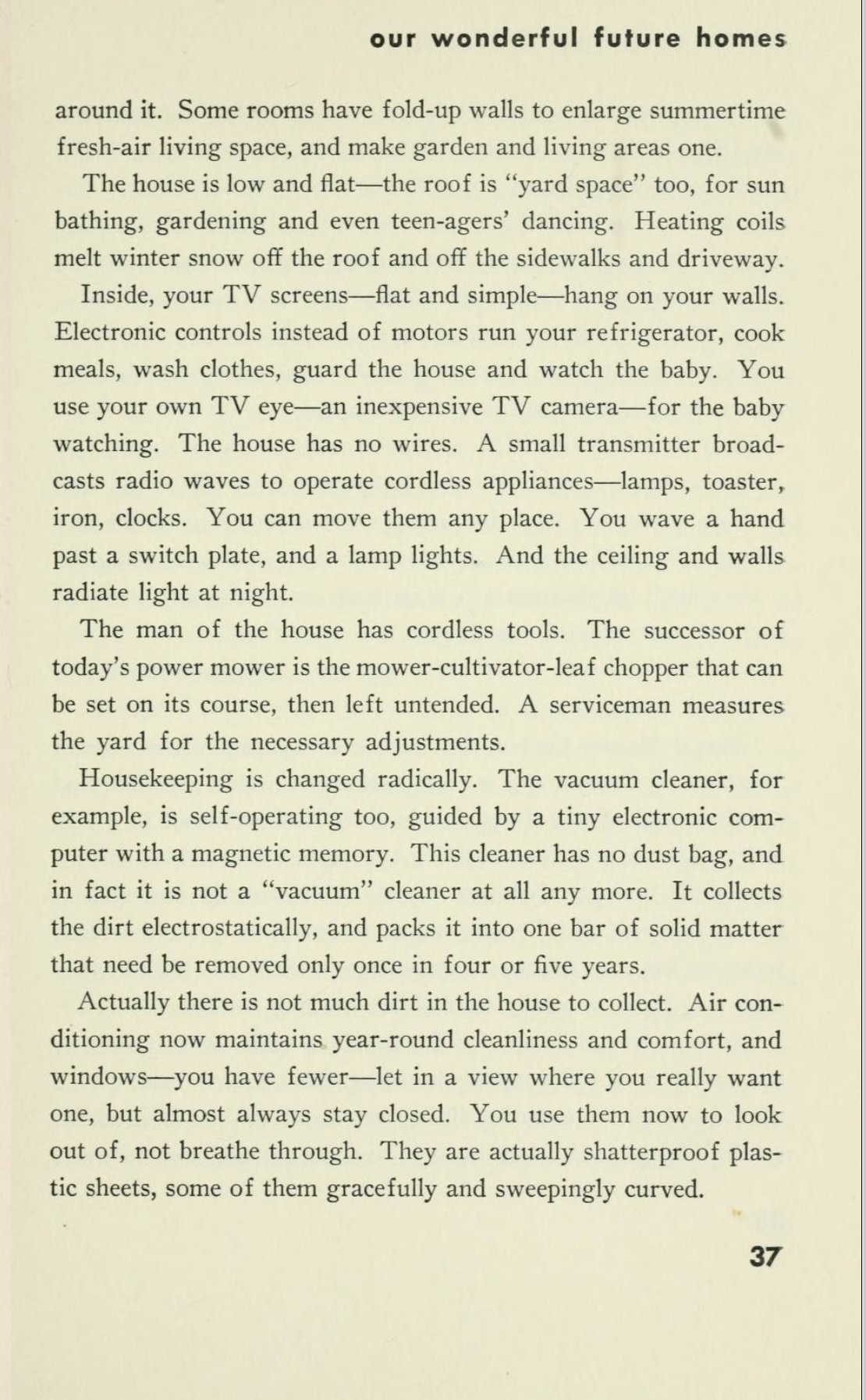
Posted By: Paul - Sun Oct 01, 2023 -
Comments (3)
Category: Predictions, Yesterday’s Tomorrows, Books, 1950s
Mystery Girl of 1947
Pulp International reveals:The Mystery Writers of America, which was founded in 1945 in New York City and soon expanded to other locations, in its early years used to throw what they called a Clues Party. In November 1947 the party was in Chicago, and the MWA awarded the title of Mystery Girl to the woman who performed best in a scream test—as opposed to screen test. Four contestants—Marybeth Prebis, Betty Rosboro, Bobby Jo Rodgers, and Portia Kubin—let fly with their most bloodcurdling screams, and the winner was Kubin, above.
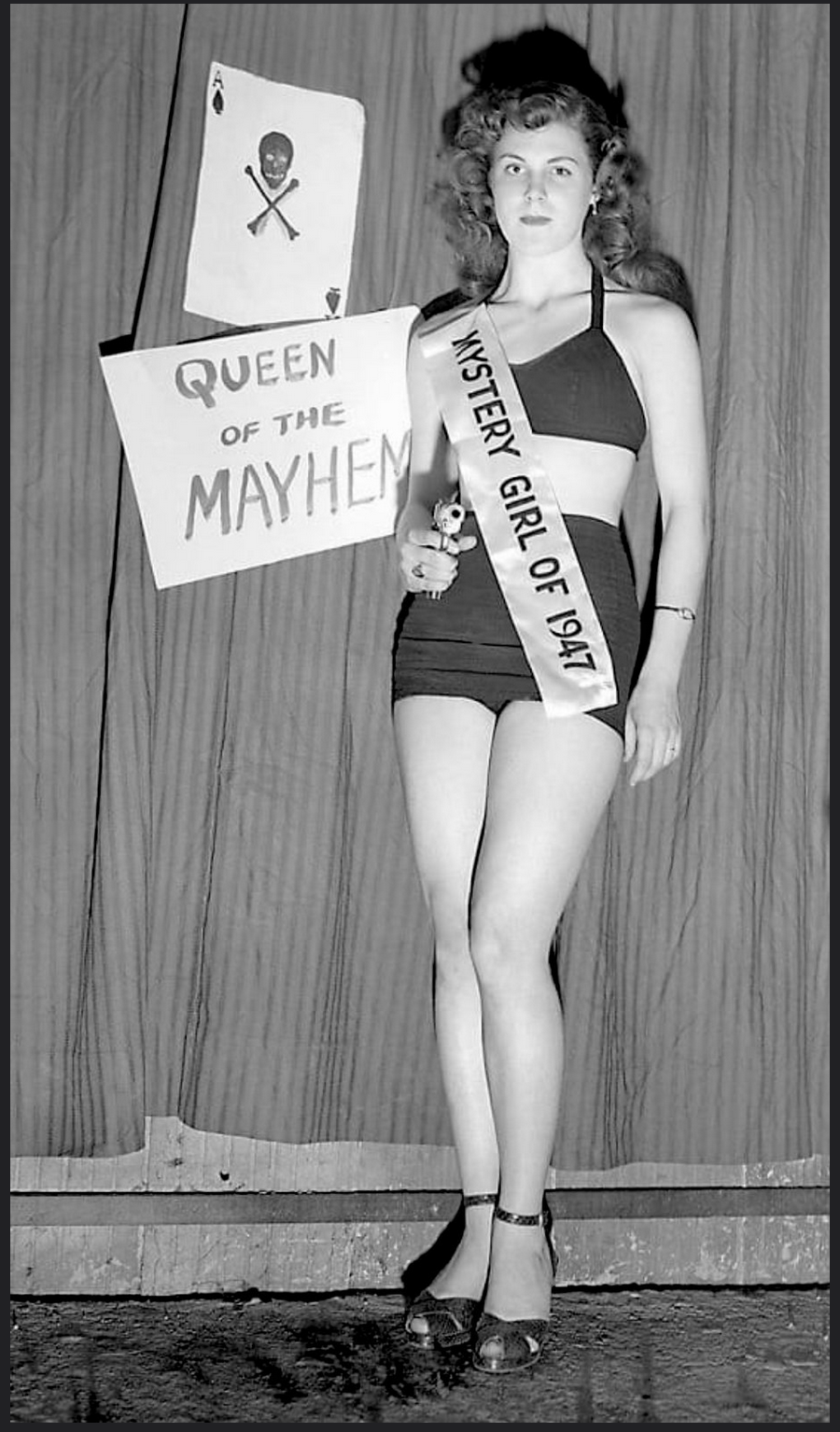
Posted By: Paul - Sat Sep 23, 2023 -
Comments (4)
Category: Awards, Prizes, Competitions and Contests, Beauty, Ugliness and Other Aesthetic Issues, Literature, Books, 1940s, Screams, Grunts and Other Exclamations
Spermy
Multiple copies for sale at Abebooks."Published by The Marine Historical Association, Inc., Mystic, CT, 1950. A brief introduction to whales."
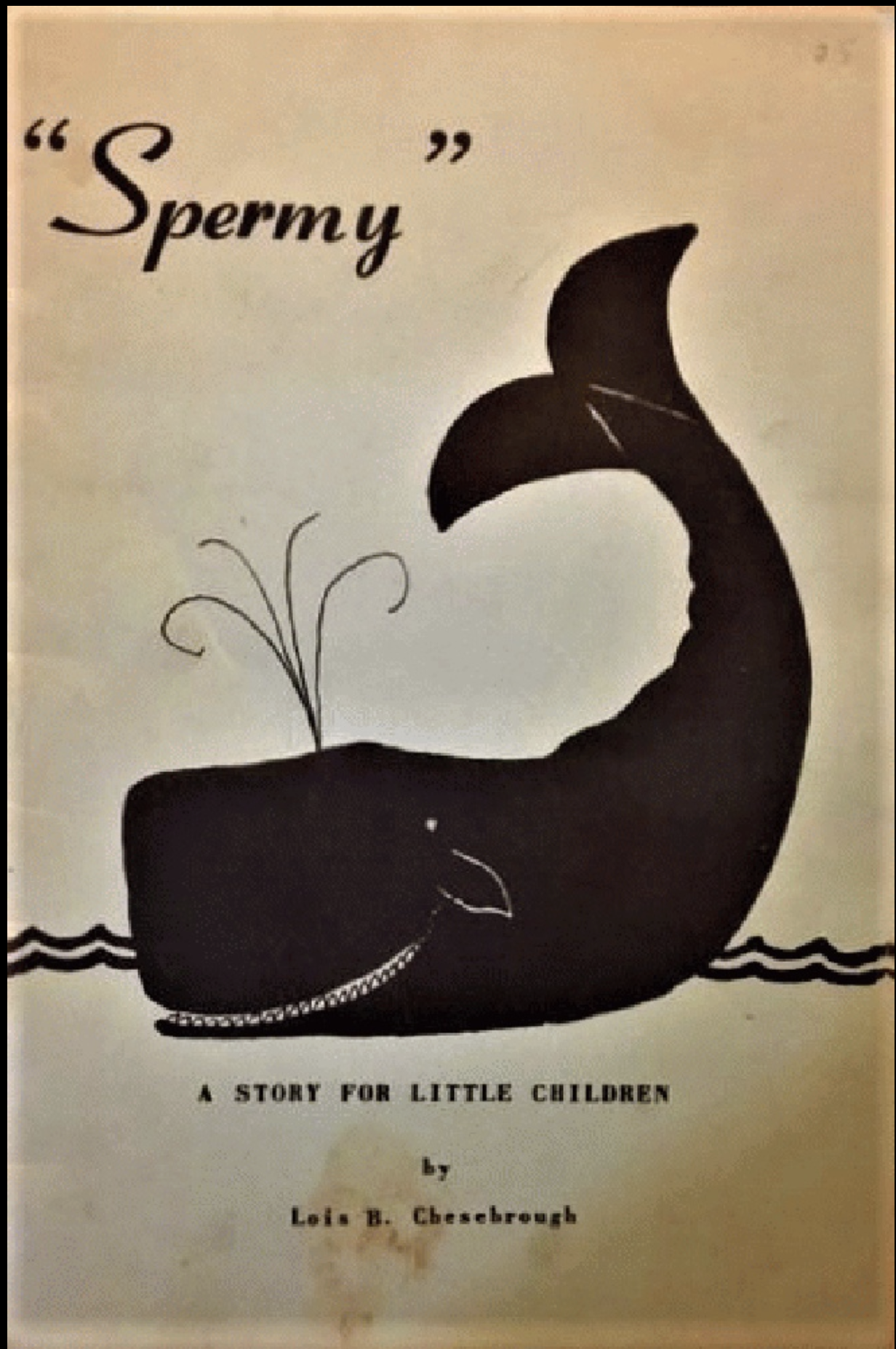
Thanks to Richard Bleiler.
Posted By: Paul - Tue Sep 12, 2023 -
Comments (2)
Category: Innuendo, Double Entendres, Symbolism, Nudge-Nudge-Wink-Wink and Subliminal Messages, Nature, Oceans and Maritime Pursuits, Books, Reader Recommendation
Journal of the Identical Lunch
Journal of the Identical Lunch, published in 1971, records the experiences of artist Alison Knowles and her friends all eating an identical lunch — "a tunafish sandwich on wheat toast with lettuce and butter, no mayo and a large glass of buttermilk or a cup of soup" — though not all at the same time. Knowles herself reportedly ate this identical lunch every day at a New York diner.Copies of the book are now quite rare, so if you want one (perhaps as an investment? The price will surely only go up) it'll cost you at least $200, and perhaps as much as $500.
More info: artnet.com, MoMA.org


Posted By: Alex - Mon Jul 10, 2023 -
Comments (1)
Category: Art, Food, Books, 1970s
Wife Gets Smart, Makes Husband Happy
In 1941, Safeway began including comic strips in their newspaper ads. The comics continued throughout World War II until 1947.Nat Gertler collected these comic-strip ads together in a book titled Wife Gets Smart, Makes Husband Happy. It's a collection WUvies might enjoy since it offers a bizarro window onto the concerns of mid-20th century American families.
One theme in particular emerges repeatedly: wives desperately trying to manage the moods of their husbands (the husbands being either cranky, obnoxious, clueless, or lethargic). Somehow the wives always manage to save the marriage by shopping at Safeway.
More info: AboutComics.com, Amazon



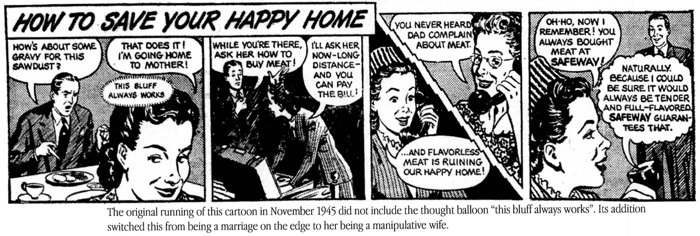

Posted By: Alex - Sat Jul 08, 2023 -
Comments (0)
Category: Advertising, Comics, Books, 1940s
Hand Grenade Throwing as a College Sport
Lewis Omer’s Hand Grenade Throwing as a College Sport, published in 1918, appears in various lists of books with odd titles.I was curious about the contents of the book, but I initially came up empty handed. The British Library blog reported that it was a nine-page booklet, but that no copies of the title seemed to remain in existence. The Library of Congress didn't have a copy, nor did any other libraries. And the British Library's own copy was destroyed during aerial bombing in World War II.
But after some searching I found what appears to be the text of Omer's booklet reproduced in the Spalding's Athletic Library Official Handbook, published in 1919, and viewable at archive.org.
So why hand-grenade throwing as a college sport? Because, at the time Omer wrote his book, young American men were being sent to fight in World War I, and some colleges had introduced grenade throwing as a sport, to prepare them for the war. Using dummy grenades, obviously, rather than live ones. Omer's booklet provided the official rules for the new sport.
Some more info about the history of grenade throwing as a sport can be found at the History Of The California Interscholastic Federation Southern Section.
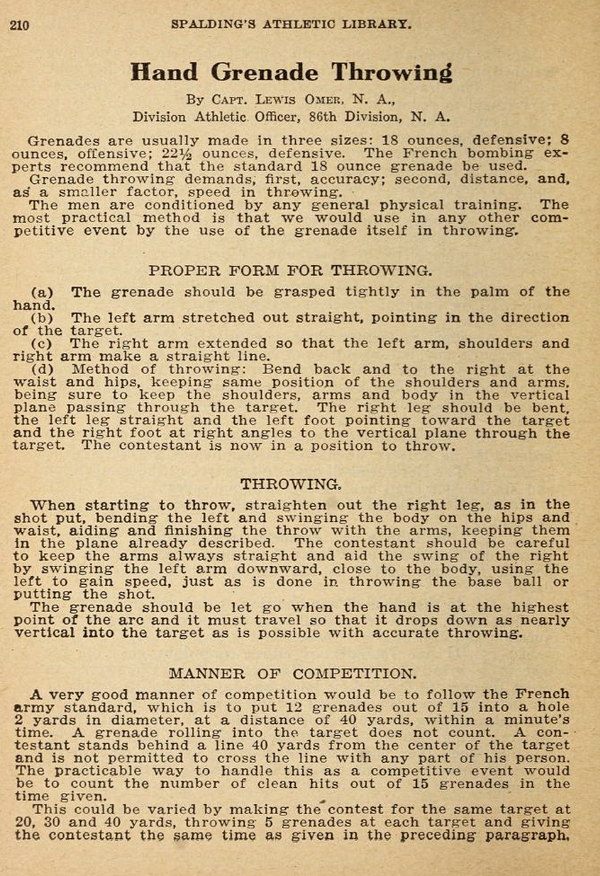
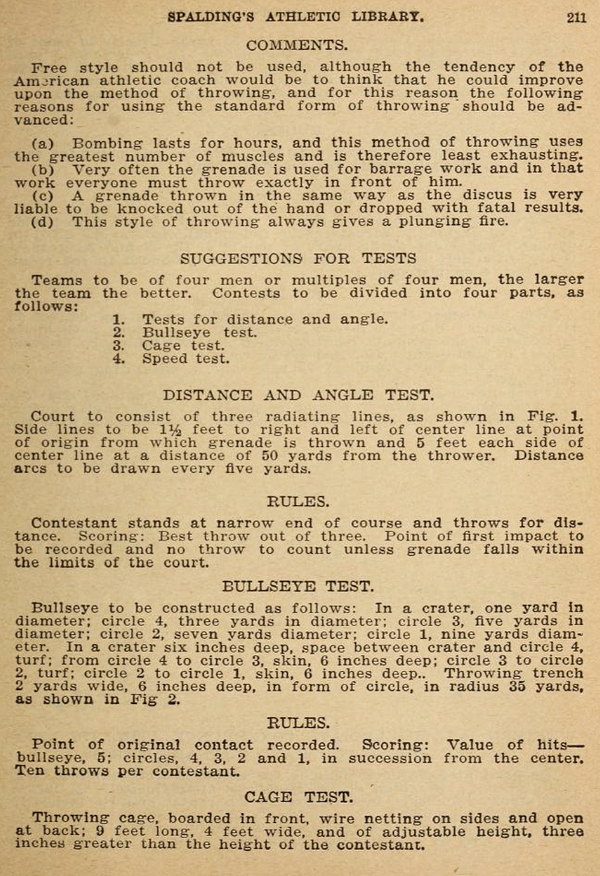
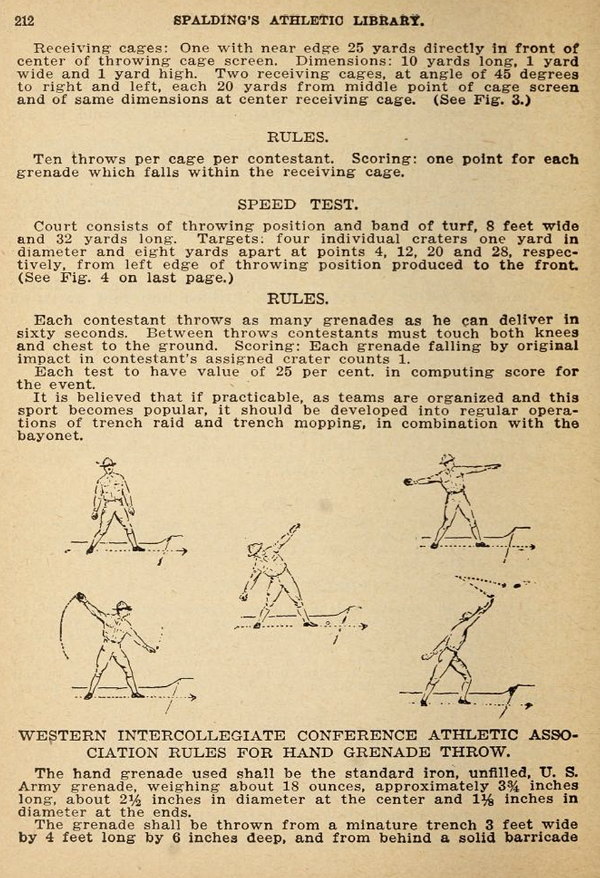
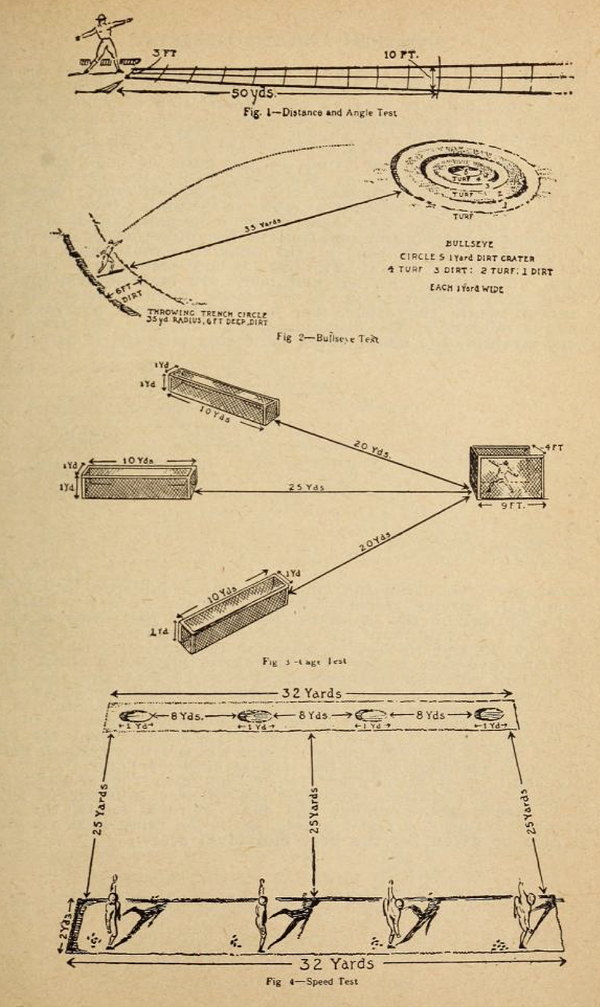
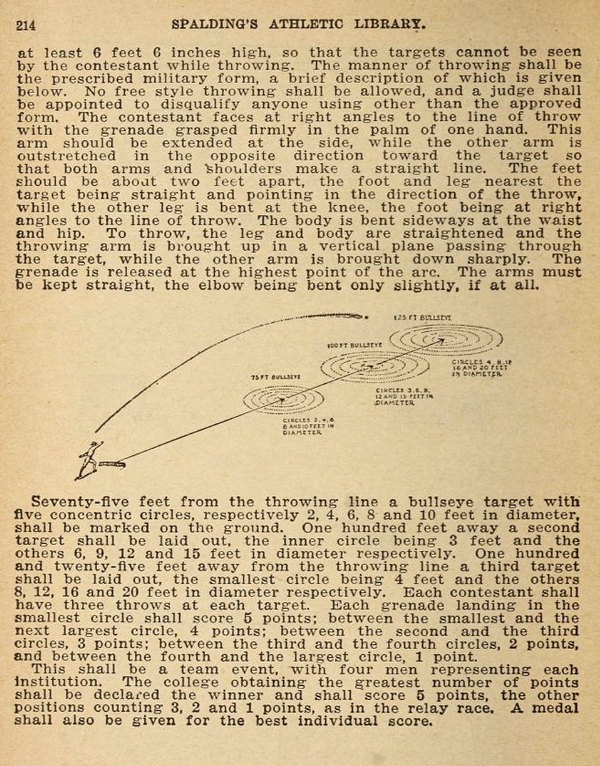
Posted By: Alex - Thu Jun 22, 2023 -
Comments (5)
Category: Sports, Books, 1910s, Weapons
The Doomsday Will of Maurice Dekobra
According to Wikipedia, during the 1920s and 30s Maurice Dekobra was probably the best-known French writer in the world. His most famous book was La Madone des Sleepings (The Madonna of the Sleeping Cars), which according to its Amazon blurb is "one of the first and most influential spy novels of the twentieth century."I hadn't heard of it. This is probably because (again according to Wikipedia) by the 21st Century Dekobra had become a "total unknown."
In 1945, while Dekobra was still near the height of his fame, he drew up an unusual will. He left his entire library of 17,000 books as well as his art collection to the town of Papeete in Tahiti. He did this because he figured that big cities such as Paris and London would probably soon be destroyed by nuclear bombs. But Papeete might survive. Therefore, so might his books.
Dekobra ended up living until 1973. I haven't been able to find out if, by that time, he had changed his will, or if Papeete ever got his books.

Los Angeles Times - Oct 3, 1945

Dekobra in 1965 holding some of his books
Posted By: Alex - Thu Jun 15, 2023 -
Comments (3)
Category: Death, Inheritance and Wills, Books
Kicked To Death By A Camel
According to the article "Camel-Related Deaths" in The American Journal of Forensic Medicine and Pathology:Some searching for examples of camel-related deaths led me to discover a book with the oddball title, Kicked To Death By A Camel, published in 1973.

The author, Clarence J.L. Jackson, was a pseudonym for Richard W. Bulliet, a history professor at Harvard (and later Columbia University). On his Amazon page he writes:
Sounds like it could be a fun read. If you're interested, you can either buy a used copy or check it out via archive.org.

Shreveport Times - Sep 23, 1973
Posted By: Alex - Mon May 22, 2023 -
Comments (1)
Category: Animals, Death, Books, 1970s
Thirty Years Among the Dead
The Wikipedia page for Wickland, where we learn:Wickland turned away from conventional medical psychology and toward the belief that psychiatric illnesses were the result of influence by spirits of the dead. Wickland came to believe that a large number of his patients had become possessed by what he called "obsessing spirits", and that low-voltage electric shocks could dislodge them, while his wife Anna acted as a medium to guide them to "progress in the spirit world". Spiritualists considered him an authority on "destructive spirits" and he wrote a book in 1924, Thirty Years Among the Dead, detailing his experiences as a psychical researcher.[3]
Wickland was convinced that he was in contact with a group of spirits known as the "Mercy Band" who would remove the possessors, and help them in the spirit world. Psychologist Robert A. Baker listed Wickland and Arthur Guirdham as early psychiatrists who preferred to "ignore the science and embrace the supernatural".[4]
Read his book at the Internet Archive.
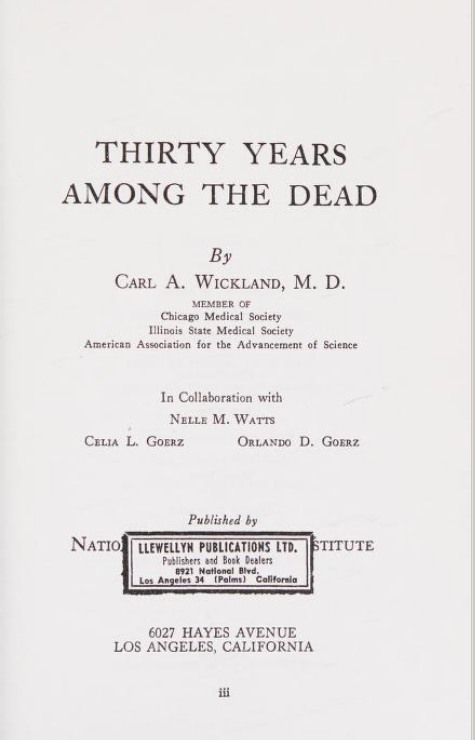
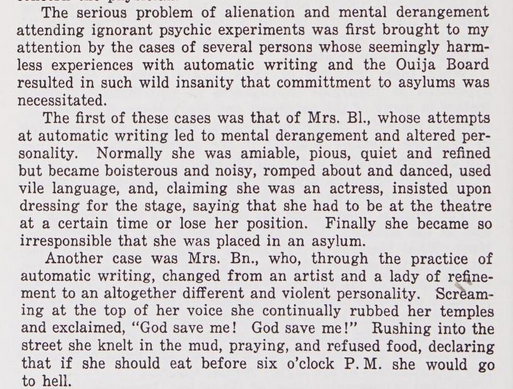
Posted By: Paul - Mon Mar 13, 2023 -
Comments (0)
Category: Death, Supernatural, Occult, Paranormal, Books, 1920s

| Who We Are |
|---|
| Alex Boese Alex is the creator and curator of the Museum of Hoaxes. He's also the author of various weird, non-fiction, science-themed books such as Elephants on Acid and Psychedelic Apes. Paul Di Filippo Paul has been paid to put weird ideas into fictional form for over thirty years, in his career as a noted science fiction writer. He has recently begun blogging on many curious topics with three fellow writers at The Inferior 4+1. Contact Us |




